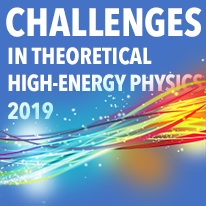Speaker
Ben Margalit
Description
The merger of binaries consisting of a white dwarf (WD) and
a neutron star (NS), though much less
studied than their NS-NS/WD-WD brethren, are relatively
common astrophysical events which may
contribute to the transient sky. We describe a 1D
time-dependent model of the accretion flow
produced by the dynamical disruption of a WD by a NS, which
accounts for the effects of nuclear
burning on the disk dynamics and composition. Outflows from
the disk, containing a modest
quantity of Ni56, power a dim rapidly-evolving (~week-long)
optical transient following the merger,
broadly consistent with the class of `Ca-rich gap
transients’. The observed large offsets of these
events from their host-galaxies results naturally from a
WD-NS merger due to the large natal birth
kick received by the NS. Finally, we show that a WD-NS
merger provides a natural mechanism for
creating planets orbiting the millisecond pulsar PSR
B1257+12, providing new insight into the
unusually high proper motion of the pulsar-planet system.

